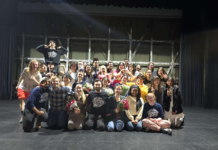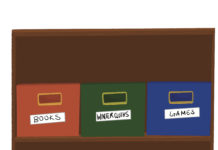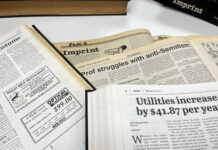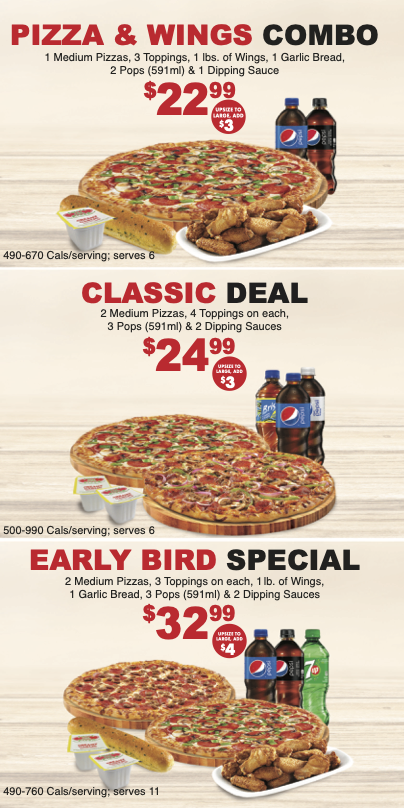It turns out the digital revolution doesn’t always have a leg up on tradition.
Several UW instructors have expressed concern at the inability to order physical books from the W Store, despite the established fact that printed books are better at facilitating detailed comprehension than e-books. Multiple incidents point to a trend in university classrooms of e-books seemingly taking a larger role in students’ education, for better or for worse.
Associate professor Aimée Morrison, who works in the English language and literature department, had her request to order physical copies of Digital Media Society by Simon Lindgren from the W Store for her class this term denied. “I looked through a bunch of books first to pick this one because I think it’s most relevant. It’s cheap. My students are going to read all of it.” The store said it would not order the physical textbooks, but that it would direct students to UW’s e-text partner.
“I wrote back and I was like… the bookstore is trying to discourage me from ordering a book?” she asked disbelievingly. Morrison, an expert in digital media and humanities, expressed that she specifically wanted a print book because “the research is pretty clear on this, that people learn better from print materials… particularly in academic situations, and that often, people don’t realize how much they’re not learning [with an e-book].”
Various studies have demonstrated the merits of physical textbooks over digital ones, with some proving that people are better at recalling details and keeping track of the chronological order of information in physical texts due to the spatial and tactile cues they provide.
Morrison said that she was told one of the reasons the bookstore was not going to order the book was that when the book had previously been ordered by a different professor for a different class, no one had bought it.
Another reason given by the store was that the book was readily available on Amazon. “So that’s like going to McDonald’s and they’re like, ‘We’re not gonna sell you a Big Mac. But Burger King has a Whopper that I hear is quite tasty.’ Like, what?”
Morrison and the bookstore compromised to offer a link to the e-text, as well as a link to the Amazon page to order the physical book.
In response to Morrison’s tweet about the incident on X, formerly known as Twitter, several instructors ranging as far as Quebec and Newfoundland and Labrador described similar experiences.
Another UW English instructor, Lara El Makui, described a similar story. By pure coincidence, El Makui attempted to order the same book from the W Store in preparation for her winter classes, but was similarly told that it would not be ordered because students weren’t purchasing it.
El Makui acknowledged that the question of digital versus physical textbooks can be a matter of preference, but that she simply wanted her students to have the option to purchase a physical copy. “For me it’s not ethical to tell students to go to Amazon when they have a bookstore that should be able to provide it for them,” she said. “I don’t think it was good enough [of] a reason for the W Store not to buy it, especially [because] more than one instructor is using this book… if we have to be in person, then surely we have to have books in person, or at least the option to have those.”
“You would think that the purpose of a university bookstore is to support the academic mission of the university by having available the niche books that people are required to study, but in fact, university bookstores are budgeted differently in that they need to be self-sustaining and they often pay rent to the universities that they serve,” Morrison said. She explained that because the W Store needs to make a profit, the increasing availability of e-books means that the store is unable to afford physical textbooks since they are no longer a guaranteed source of income.
Ryan Jacobs, director of print and retail solutions at UW, explained via email that the W Store “covers its share of space and utilities costs” in following with standard policy for all ancillary service units.
“[The W Store] determine[s] what textbooks we are able to offer for sale based on past sales history and whether a professor has made the textbook mandatory to purchase,” he wrote.
Both Morrison and El Makui had made the textbook mandatory for their class.
Morrison pointed to the profit to be found in e-books as one potential reason behind the growing trend of publishers’ preference for e-books over physical textbooks. She explained that e-books, particularly those that come with specific access codes and are only accessible for a limited amount of time, have become one way of ensuring a consistent stream of income. This way, students can’t put those codes up for sale in the used book market and thereby help other students save money on an entirely new copy.
The decline in print books is visible in the recent closure of the Used Bookstore as well as in sales from the W Store. According to SLC manager Scott Pearson, the Used Bookstore’s sales for the 2022-2023 fiscal year were less than $200,000, and during that time, the bookstore ran an operating loss of $86,440.46.
In the 2022-2023 fiscal year, the W Store sold $2.9 million in course materials, though it has experienced an average annual decline in course materials of 17 per cent over the past five years.
“And [publishers] seem increasingly to be getting out of the print book business entirely,” Morrison said, explaining that the move towards e-books is also leading to the production of multimedia e-books which can include components such as discussion questions, final exam questions, and essay concepts. Morrison referred to such texts as a “course in a can.”
“I’m a university professor. I design my courses, and what my students are paying for is for me to teach them stuff, not for me to download a bunch of PowerPoints from a publisher,” she said.
In 2014, printed textbooks made up 89 per cent of the W Store’s sales, with digital books making up just two per cent. In 2023, printed textbooks were 55 per cent of sales, and digital books made up 34 per cent.
“It just feels like everything is swirling the drain at the same time: textbooks are too expensive, people were selling them used, publishers [want] more money, bookstores need to make a profit,” Morrison said. She stated that her and her colleagues have found work-arounds in the form of ordering from local bookstores like Words Worth Books, located in Uptown Waterloo.
David Worsley, co-owner of Words Worth Books, said that about a decade ago, he experienced an influx of orders from university professors, with the store providing for about six courses for six different professors. However, things aren’t the same today.
“Textbooks, ‘I need this for eight weeks for X course,’ … I simply don’t hear as much as I did five, ten years ago,” Worsley said, explaining that he assumes students turned to e-books or used copies in an attempt to cut down on costs.
Worsley echoed Morrison’s sentiment that print books consistently win over e-books in terms of reading comprehension, and expressed confidence that e-books wouldn’t get a leg up over trade titles (the fiction and non-fiction titles sold in bookstores) any time soon.
In addition to the potential ramifications on students’ quality of education, Morrison pointed out that the impacts of an increasingly digital education aren’t limited to that sphere.
“It’s isolated us. We’re not a community of people where you might bump into people who are in your class at the bookstore, buying the same books as you from the same pile right?” she said. “This is not utopia. I don’t understand that this is better than what we did before… especially since people don’t learn as much from those materials.”
With files from Nadia Khan.

































